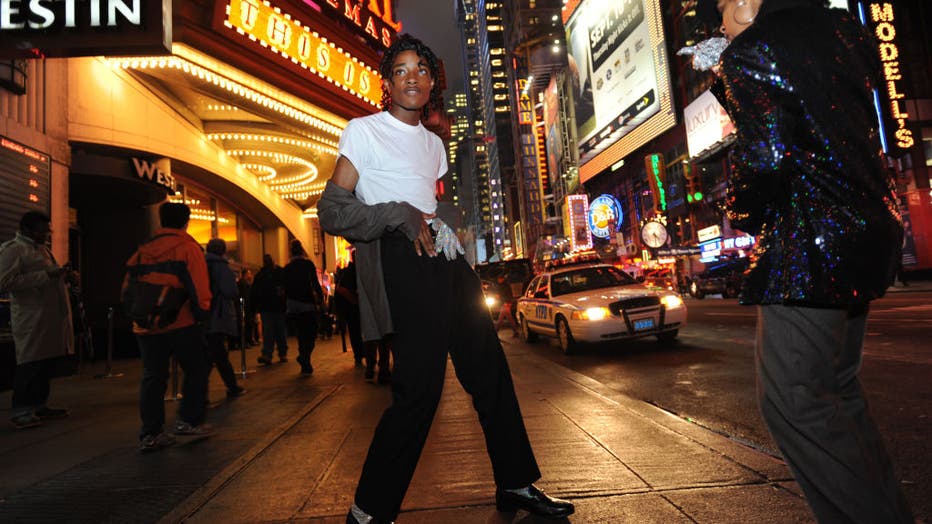Deadlock in Daniel Penny trial sparks hung jury concerns: What it means under NY law

NY News Update - Jury deadlocked in Penny Trial, CEO killer manhunt
In this NY News Update, we discuss the jury in the Daniel Penny manslaughter trial saying it is deadlocked, and the ongoing manhunt for the man who shot and killed United Health CEO Brian Thompson.
NEW YORK - The jury in the Daniel Penny trial has yet to reach a verdict-- raising concerns about a possible hung jury.
Since Tuesday, jurors have been trying to decide whether Penny was justified in putting Jordan Neely in a chokehold on a New York City subway.
On Thursday, they reviewed testimony from the medical examiner, definitions of recklessness and negligence, and videos, including police body camera footage and bystander recordings.
On Friday, the jury told Judge Maxwell Wiley they couldn’t reach a unanimous verdict on the first charge of second-degree manslaughter, prompting the judge to issue an Allen charge urging them to make every effort to agree. The judge then ultimately dismissed the first charge of manslaughter in the second-degree.
SKIP TO: Allen charge | Hung Jury | Mistrial possibility | Charges
Featured
Daniel Penny trial: What charges does he face? What do they mean?
The third day of jury deliberations ended on Thursday without a verdict in the fatal NYC subway chokehold trial of Daniel Penny.
If the jury can’t agree on a verdict, it could lead to a retrial.
What is an Allen charge?

What is the Allen charge? Daniel Penny jury analysis
The jury in the subway chokehold death trial against Daniel Penny is deadlocked on one count, and the judge has issued an Allen charge. Imran H. Ansari, a former prosecutor with the Brooklyn Assistant District Attorney's Office, explains what this means and what comes next.
An Allen charge, also called a "dynamite" or "shotgun charge," is a special instruction a judge gives to a jury that can’t agree on a verdict (Legal Information Institute).
It encourages jurors to keep deliberating and try to reach a unanimous decision. These charges are controversial because some believe they put too much pressure on jurors, especially those in the minority, to change their opinions. For this reason, many states ban Allen charges, but they are still allowed in federal courts.
The term "Allen charge" comes from the 1896 Supreme Court case Allen v. United States, which approved their use in federal cases.
What happens in a hung jury?
A hung jury happens when jurors can’t agree on a verdict, which could lead to a retrial (Legal Information Institute).
In the meantime, Neely’s father, Andre Zachary, filed a civil suit against Penny, accusing him of negligence and assault. Penny’s legal team called the timing of the lawsuit "unfortunate" while awaiting a verdict.
Penny has pleaded not guilty to manslaughter and criminally negligent homicide.
Hung jury NY law
The jury told the Judge Wiley they couldn’t reach a unanimous verdict on the first charge of second-degree manslaughter against Daniel Penny. In New York, a unanimous decision is required to avoid a hung jury.
If the jury remains deadlocked on any of the charges, the judge could declare a mistrial.
However, Wiley emphasized that the jury must "ultimately" deliver a verdict on the second charge.
A mistrial does not mean that the case is over according to NY law. The prosecutor can decide to retry Penny if a mistrial is declared.
What charges does Penny face?
Daniel Penny charges
Penny faces second-degree manslaughter and criminally negligent homicide charges:
- Manslaughter requires proving that a defendant recklessly caused another person's death. The standard entails, among other things, consciously disregarding a substantial and unjustifiable risk that an action will be deadly.
- Criminally negligent homicide, on the other hand, involves engaging in serious "blameworthy conduct" while not perceiving such a risk.
What happens if Penny is found guilty?
If the jury finds Penny guilty, he could face up to 15 years in prison. There is no minimum sentence. The Manhattan District Attorney’s Office also reached out to FOX 5 NY to report that there is also no mandatory prison sentence for Penny’s charges, but it is unclear how that could affect sentencing.
What happened on May 1, 2023?
On May 1, 2023, Penny had left class and boarded an uptown F train in Manhattan to head to the gym. Neely was on board the train, and witnesses said he was shouting about needing food and something to drink before whipping his jacket to the floor and starting to scream. They differed in descriptions of his movements and whether they were threatening.

Subway chokehold: Jordan Neely's family speaks out
The family or Jordan Neely is speaking out, saying former marine Daniel Penny 'needs to be in prison' for his role in Neely's death on the NYC subway last week. Meanwhile, the NYPD is looking for protesters who they say endangered themselves and others by demonstration on teh subway tracks. It will be up to a grand jury to decide if Penny committed a crime or not.
Penny stepped in and approached Neely from behind. With the help of two other passengers, Penny pinned Neely to the ground and placed him in a chokehold until Neely’s body went limp and he lost consciousness. The medical examiner’s office ruled the death a homicide caused by compression of the neck.
The train stopped at the Broadway-Lafayette Street station in Manhattan, allowing passengers to get off, but Penny did not let go.

In this image from body camera video provided by New York City Police Department, emergency medical personnel in a New York City subway car attempt to revive Jordan Neely after he was placed in a chokehold by Daniel Penny on May 5, 2023. (New York Ci
Prosecutors and the defense both agree that Penny had the right to step in, but prosecutors argue that Penny used too much force on an unarmed man.
What do prosecutors say?
Prosecutor Dafna Yoran told jurors at the start of summations Monday that Daniel Penny used too much force for too long on Neely, holding him a chokehold for nearly six minutes. Prosecutors argued that he could have released Neely after passengers stepped off the train at the station, once he was no longer a threat to others.
What did the defense say?
Defense lawyer Steven Raiser says Penny acted to save subway riders from threatening behavior. They argued that Penny held onto Neely until police arrived so they could take him into custody. They also claim that the chokehold was not what killed Penny, instead arguing that schizophrenia, synthetic marijuana use and sickle cell trait led to his death.

Defense rests in Daniel Penny trial without his testimony
The defense in Daniel Penny's manslaughter trial has rested its case without Penny taking the stand. FOX 5's Linda Schmidt has the story.
Who is Daniel Penny?
Daniel Penny is a U.S. Marine Corps veteran from West Islip, Long Island. He served in the Marines for four years and was discharged in 2021. At the time of Neely’s death, Penny was studying architecture.
Who was Jordan Neely?

Jordan Neely is pictured before going to see the Michael Jackson movie, "This is It," outside the Regal Cinemas in Times Square in 2009. (Andrew Savulich/New York Daily News/Tribune News Service via Getty Images)
Jordan Neely, 30, once was among the city's corps of subway and street performers and was known for his Michael Jackson impersonations. But after his mother was violently killed when he was a teenager, Neely was diagnosed with depression and schizophrenia, was repeatedly hospitalized, struggled with drug abuse and had a criminal record that included assault convictions.
What happened during the trial?
During the monthlong trial, the jury heard testimony from subway passengers who witnessed Penny's roughly six-minute restraint of Neely, as well as police who responded to it, pathologists, a psychiatric expert, a Marine Corps instructor who taught Penny chokehold techniques and Penny's relatives, friends and fellow Marines. Penny chose not to testify.
Jurors watched videos recorded by bystanders and by police body cameras and saw how Penny explained his actions to officers on the scene and later in a stationhouse interview room.

NEW YORK, NEW YORK - DECEMBER 03: Daniel Penny exits the courtroom for a break during his trial at Manhattan Criminal Court on December 03, 2024 in New York City. Closing arguments have ended and the jury is expected to deliberate in the trial of Pen
Timeline
May 1, 2023: Daniel Penny places Jordan Neely in a fatal chokehold.
May 10, 2023: New York City Mayor Eric Adams said that the death of Jordan Neely at the hands of a fellow subway rider was "a tragedy that never should have happened" and pledged to do more to help people experiencing mental health crises.
May 11, 2023: Penny turns himself in to the Manhattan District attorney’s office.
May 20, 2023: Republican presidential hopefuls line up to support Penny.
June 15, 2023: A grand jury indicted Penny.
June 28, 2023: Penny pleaded not guilty to second-degree manslaughter and criminally negligent homicide during his arraignment.
Jan. 17, 2024: A judge declined to dismiss the case against Penny.
Oct 21, 2024: Jury selection begins.
Nov 1, 2024: Jurors have heard opening statements in the trial.
Dec. 2, 2024: Closing arguments begin.


